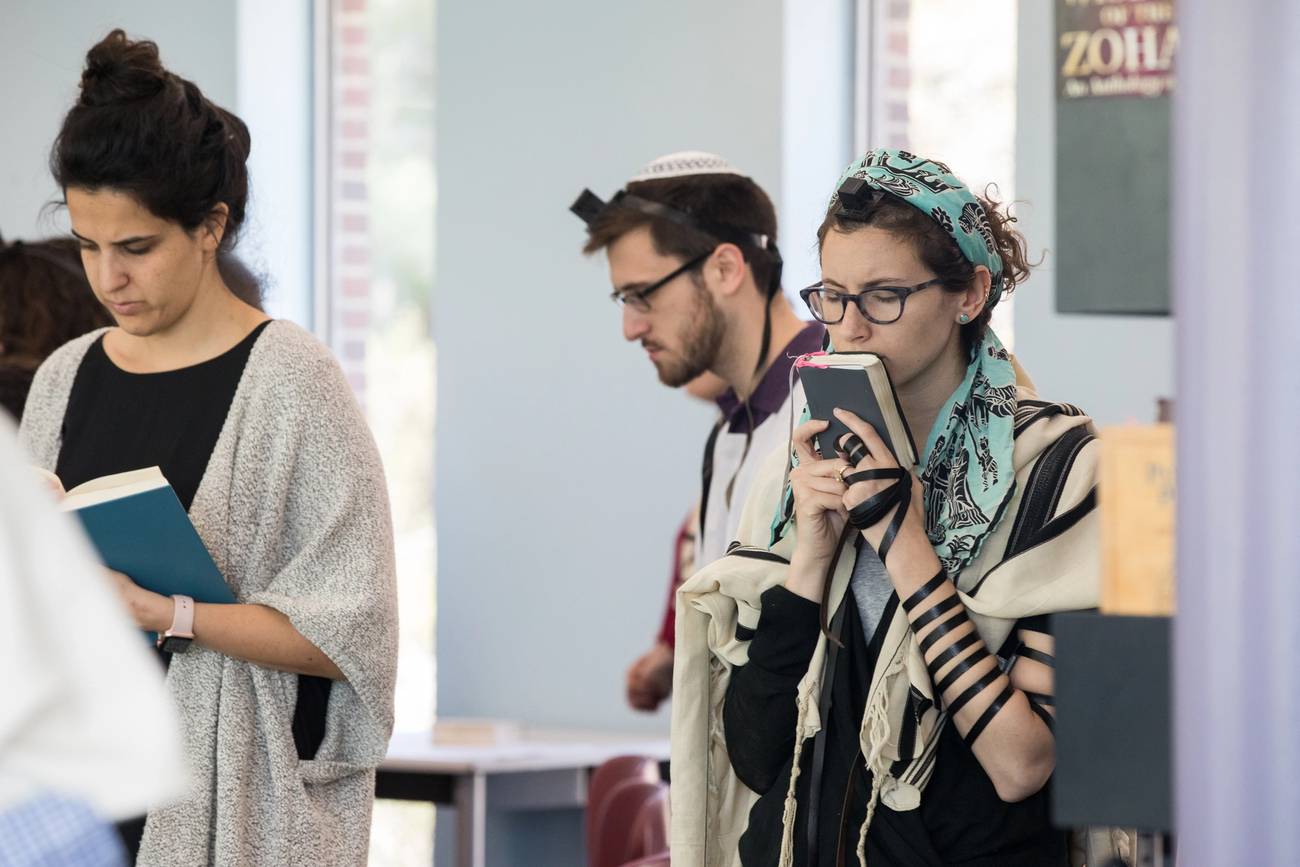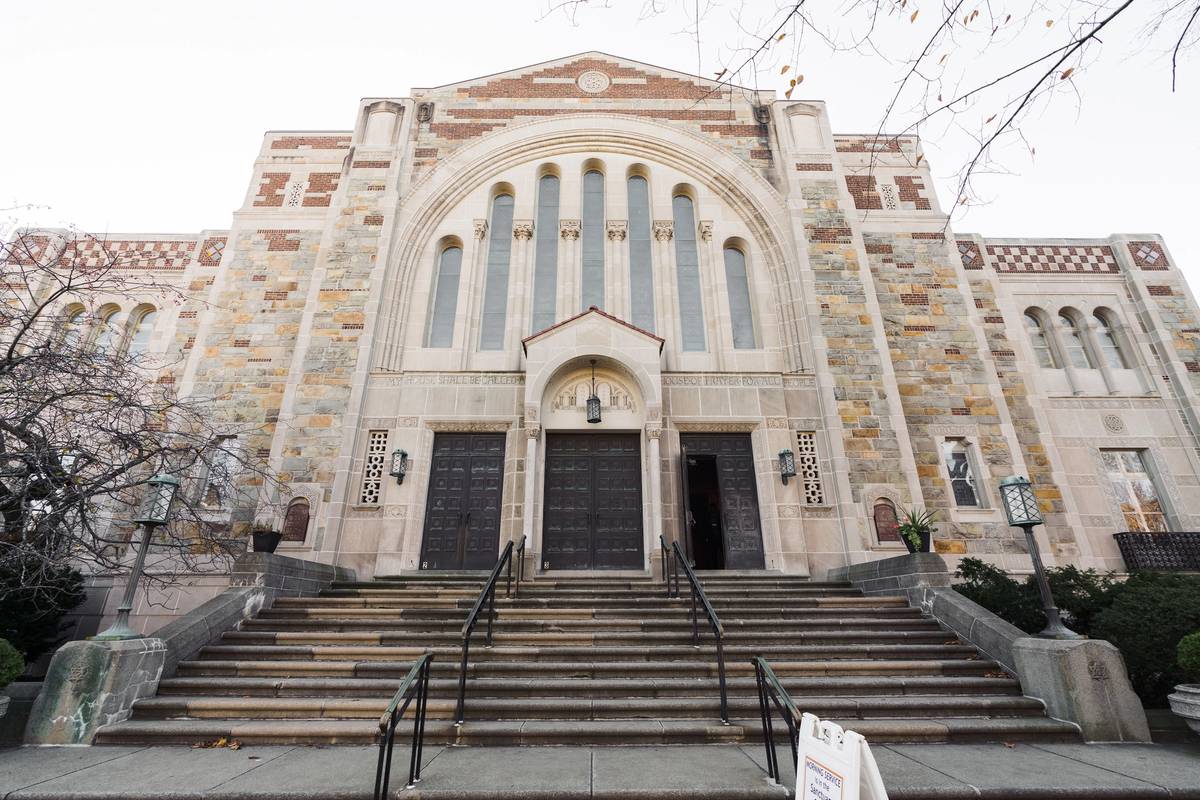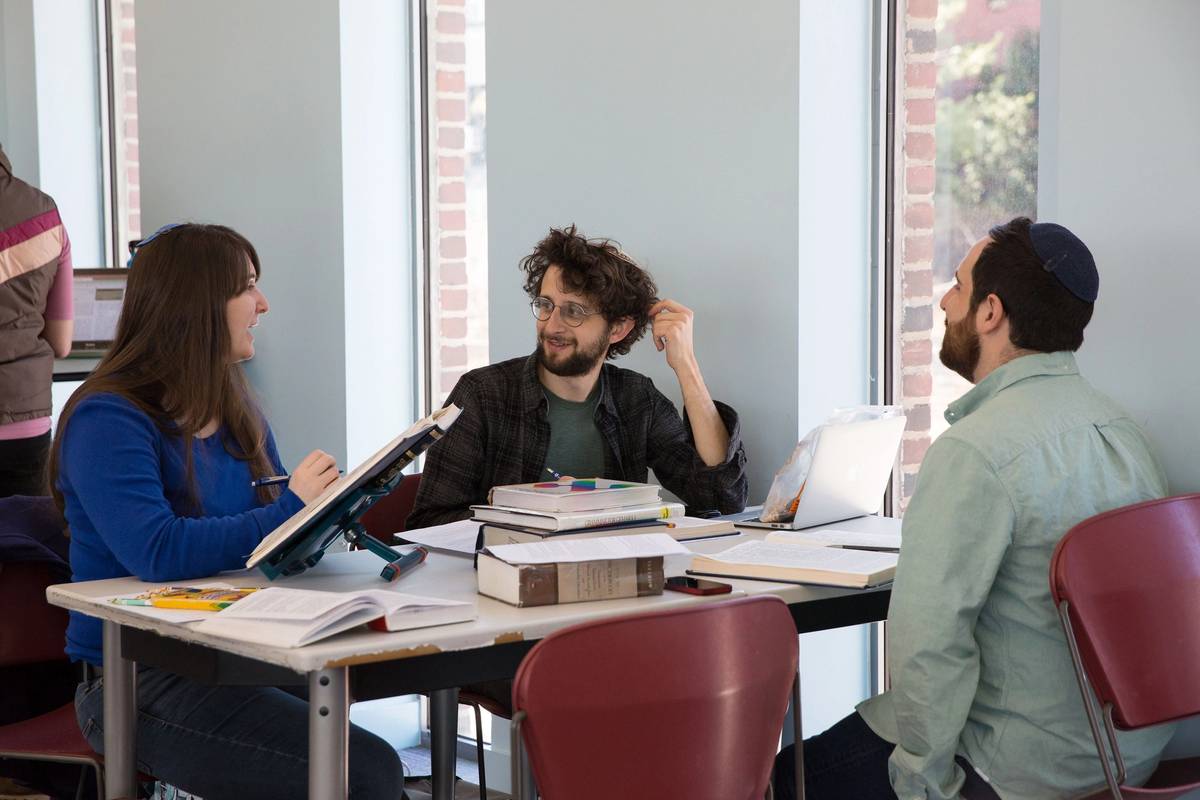Beyond Conservative and Reform: The Rise of the Unaffiliated Synagogue
The lines within and between denominations are shifting, blurring, and being crossed more frequently



Temple Ohabei Shalom is the longest enduring Jewish congregation in Massachusetts. Founded in Boston in 1842, the congregation—now in Brookline—will celebrate its 180th anniversary this year.
The synagogue, which is affiliated with the Union for Reform Judaism, traces its Reform roots to the latter part of the 19th century. Yet, for the past several decades, its clergy have not trained at a Reform rabbinical seminary. Its current spiritual leader, Rabbi Audrey Marcus Berkman, was ordained at the Reconstructionist Rabbinical College while Assistant Rabbi Daniel Schaefer is a graduate of the pluralistic Hebrew College Rabbinical School.
Members include Jews by birth and Jews by choice, interfaith families, and a diverse range of ethnicities, nationalities, and sexual orientations. “We are a uniquely diverse and pluralistic congregation with different levels of ritual practice, and the rabbis reflect that,” said Berkman. “People want to connect to meaning, history, and be part of a larger story.”
Today the lines of Jewish religious denominations or movements have blurred, fueled by a combination of factors that affect synagogue affiliation patterns. Experts point to a paradigm shift in the American religious landscape, social and technological disruption, the loosening of social mores and boundaries, intermarriage, and economic considerations. These changes are reflected both in contemporary synagogue life and in rabbinic education.
Young people don’t have the patience for people saying there is one right way, whether it’s religion or gender expression.
“Most people just want something that touches them and connects them to their identity beyond denomination,” said Rabbi Rolando Matalon of Congregation B’nai Jeshurun, an 1,800-unit unaffiliated congregation in Manhattan. Founded in 1825, BJ has a storied history as the first Ashkenazi congregation in New York City, evolving from Orthodox to Reform to Conservative to unaffiliated.
In the late 1980s, BJ became unaffiliated after 70 years as a Conservative congregation. Rabbi Marshall Meyer, the spiritual leader at the time, introduced a new vision reflecting the teachings of Rabbi Abraham Joshua Heschel on Jewish law and social justice, together with a vibrant neo-Hasidic spirit—all which remain today. “You don’t have to be Orthodox to love Torah, Reform to do tikkun olam and social justice, Conservative to believe in change in Jewish life, or Hasidic to find fervor and devotion of service to God,” explained Matalon, who joined BJ in 1986 and has been spiritual leader since 1993.

Current times demand being responsive, not relying on old boundaries of Judaism and becoming pigeonholed, said Rabbi Felicia Sol, who has served at BJ since 2001, and was appointed senior rabbi last year. “What BJ did 30 years ago was a foreshadowing of what came to be,” she said. “It’s an amalgamation, taking the best of all different forms and transforming it to something that is meaningful and purposeful. It’s how our community is run and how the rabbis lead.”
BJ clergy represent a variety of religious traditions (Conservative, Reform, and nondenominational)—like its 25-year-old network of rabbinic fellows, learning from each other to enrich Jewish life. As an unaffiliated congregation, BJ has been able to respond quickly to changing community needs, such as embracing LGBTQ Jews two decades before the Conservative movement.
“We now have a mixture and blending of Jewish identity and community boundaries themselves, which is forcing institutions to think how to speak when there are no longer Jewish identities with strong boundaries,” said Rabbi Irwin Kula, co-president of Clal-The National Jewish Center for Learning and Leadership. What’s occurring, he says, relates to the shifting American religious landscape. “We have had a dramatic, unprecedented weakening in America of religion. The greatest social transformation in America is the de-institutionalism of the American parishioner.”
This phenomenon is particularly pronounced among younger generations. Compared to older Jews, younger Jewish adults—ages 18-29—include large shares of people with no denominational identity, reports the 2020 Pew Study of Jewish Americans released this past May.
A key factor impacting denominational identification is interfaith marriage, emphasizes Bruce Phillips, a sociologist and professor of Jewish communal service at Hebrew Union College in Los Angeles. Only 51% of Jews ages 18-29 grew up in homes with two Jewish parents, compared to 85% of those ages 50-64, according to his analysis of Pew research data. Respondents who grew up in interfaith homes are less likely to join a synagogue and identify with an established branch of Judaism than those with two Jewish parents.
Meanwhile, diversity has become a fact of Jewish life. It’s the truest expression of the Divine, said Rabbi Adam Zeff, spiritual leader of the Germantown Jewish Center in Philadelphia. He grew up Reform, experimented with Orthodoxy in college, studied at a Reconstructionist seminary, and is a member of the Conservative movement’s Rabbinical Assembly.
For more than 40 years, the Germantown Jewish Center—a 520-family-unit pluralistic and egalitarian synagogue affiliated with the Conservative movement—has been a “community of communities,” fostering multiple prayer communities, with different perspectives.
Shabbat morning prayer communities within the Germantown Jewish Center include these choices: The Charry Minyan is a rabbi-led service that emphasizes learning, with a shorter Shacharit (morning) prayer service that uses Sim Shalom, the Conservative siddur, and includes an extended study period. Dorshei Derekh is a member-led Reconstructionist minyan egalitarian prayer service that uses Kol Haneshamah, the Reconstructionist siddur, and features lively singing accompanied by rhythm instruments. Minyan Masorti is a member-led, egalitarian minyan incorporating a complete traditional prayer service and full Torah reading. Kol D’mamah is a monthly one-hour volunteer-led service with chanting, meditation, and movement. The bimonthly Rising Song Jewish Music Residency merges traditional nusach (prayer chant) with soulful nigunim (wordless melodies).
These diverse paths encourage people to be open-minded about what Judaism can offer, explained Zeff: “In our synagogue and in our structure, there is more than one way to be Jewish, and they are all right and all valuable,” he said. “It’s the sign of the future. Young people don’t have the patience for people saying there is one right way, whether it’s religion or gender expression.”
As the American Jewish community has evolved, institutions have shifted accordingly. For instance, Hebrew College was founded in 1921 to train American-born Hebrew school teachers, and preserve Hebrew language and culture in America; classes were taught in Hebrew, reflecting the secular Tarbut Ivrit or Hebrew culture movement ideology inspired by Ahad Ha’am, the founder of cultural Zionism.
Eighteen years ago, in 2003, the Boston-based institution launched a pluralistic rabbinical school, followed a year later by a cantorial program. The goal was to create a place for different denominations to come together in a vibrant pluralistic setting, as well as for those who didn’t find a place within the different denominations, said Hebrew College President Rabbi Sharon Cohen Anisfeld: “Our vision of rabbinic education is a commitment to pluralism ... People are entering Jewish life through different doorways … Communities that can reinvent themselves to the moment are thriving … The capacity for reinvention is critical.”

This vison is reflected in its planned December 2022 move to a campus shared with other organizations. It’s also at the core of the rabbinical school curriculum, where students study traditional Jewish texts with hevruta, or study partners, while searching for the hiddush, or new Torah insight. “Young people see themselves as innovators in the rabbinic tradition. We are all part of that ancient and ever-new conversation,” said Anisfeld, quoting the Talmudic precept, “There is no study hall without innovation” (BT: Hagigah 3a: 15-17).
The growth of transdenominational seminaries has created a competitive religious marketplace for clergy leadership.
Reform and Conservative congregations are beginning to work together, sharing resources, staff, and programs. “Today there is an openness about denomination and Jewish community,” said Rabbi Dan Judson, dean and chief academic officer of Hebrew College. “That speaks to our transdenominational vision.”
This deemphasis on denominational identity is not a new phenomenon. Innovative Jewish spiritual communities such as Hadar, Ikar, Nashuva, Romemu, independent minyanim, and dozens of nonaffiliated synagogues have enriched Jewish life across America for years. “There have always been small numbers of congregations that are not affiliated with a synagogue denomination,” said Ellie Ash, a doctoral student in the religion and society track at Boston University, who has been researching halachic innovation.
What’s significant is how the growth of transdenominational seminaries has created a competitive religious marketplace for clergy leadership. For example, among Hebrew College rabbinical school alumni who serve congregations, 32% work in independent synagogues, 24% in Reform, 34% in Conservative, and 10% in Reconstructionist.
Synagogues can now tap into a wider candidate pool, bypassing movement-placement policies and avoiding movement dues. “While it is pleasant to imagine that everything is guided by ideas and theology, don’t underestimate the base economic motivations at play,” said Jonathan Sarna, professor of American Jewish history at Brandeis University.
In the 21st century, denominational boundaries have blurred. While some refer to this changing religious landscape as “post-denominational Judaism,” that may be a misnomer. Denominations remain a vital presence in American Jewish life and their rabbinical schools still produce important scholarship and graduates who contribute creatively to contemporary Jewish life. However, given shrinking membership trends, the economic impact of the COVID-19 pandemic, and the cost of movement dues, more synagogues may think twice about remaining affiliated.
“I see a slow restructuring. It won’t be radical because synagogues are so normative,” predicted HUC’s Phillips. “I don’t see denominations collapsing. There will be a process of reinvention and rethinking.”
“In the end, change is the norm. We are in a moment of profound social and economic change,” emphasized Kula, the Clal co-president. “Training the next iteration of religious leaders to be entrepreneurial and speak beyond their own tribal community is a big job … The need for leaders to manage the paradigm shift is essential.”
Paula Jacobs is a writer in the Boston area.